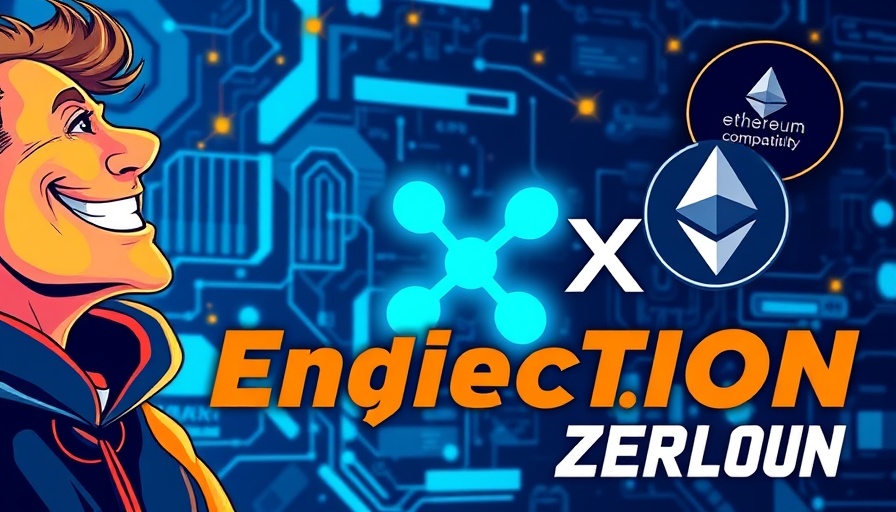
The Resurgence of Crypto Lending: Understanding the Landscape
In the aftermath of tremendous volatility that shook the crypto lending markets, a recent report by Galaxy Research titled "The State of Crypto Lending" casts a revealing light on how both centralized finance (CFI) and decentralized finance (DeFi) have evolved since their peaks. The insights detailed in the report not only simplify complex jargon but also highlight how investors and users can navigate the intricate web of crypto lending protocols. As the lending market makes a strong resurgence, understanding its dynamics can lead to substantial opportunities in the years ahead.
In the video 'Crypto Lending Is BACK — And It Could Make You Filthy Rich in 2025!', the discussion dives into the current state of crypto lending, exploring key insights that sparked deeper analysis on our end.
DeFi vs. CFI: Decoding Lending Mechanisms
The report breaks down the differences between centralized (CFI) and decentralized (DeFi) lending. In CFI, three categories dominate: over-the-counter (OTC) transactions, prime brokerage services, and on-chain private credit systems. OTC transactions are typically negotiated loans between centralized entities, which highlight the importance of interest rates and loan-to-value (LTV) ratios.
Safe from the chaos that plagued CFI during the 2022 downturn, DeFi protocols are categorized into lending applications, collateral debt position (CDP) stablecoins, and decentralized exchanges (DEXs). While lending applications let users borrow crypto by locking collateral, CDPs provide sustainability in lending, allowing for the minting of stablecoins against collateralized assets. This flexibility can be enticing for traders, providing them with options to leverage their positions even in turbulent markets.
The Consequences of 2022: Lessons for Future Investing
The significant downturn seen in 2022, caused by the collapse of entities like FTX, Celsius, and Voyager, resulted in CFI experiencing a staggering 82% decline in lending volumes. In stark contrast, DeFi has shown resilience, rebounding much quicker thanks to its permissionless structure. As per the report, DeFi lending surged by 959%, emerging from a low of $1.8 billion during the bear market to a remarkable $19.1 billion by the end of 2024. These figures illuminate the importance of risk management and illustrate the structural flaws in the CFI landscape that revealed itself during the crisis.
Future Trends: What Lies Ahead for Crypto Lending
Looking ahead, the clear message from the report is one of optimism; the lending market is expected to recover and thrive as confidence is restored. Regulatory environments that permit institutions to re-enter the arena hint toward more sustainable investment opportunities, including yield-generating strategies through services like CDP stablecoins.
Moreover, the adoption of tokenized real-world assets (RWAs) in DeFi offers institutions new avenues for generating yields that are currently off-chain. This intersection of traditional finance and blockchain technology could create unparalleled opportunities for both institutional and retail investors going forward.
Understanding Market Dynamics: Key Insights for Investors
To capitalize on what is shaping up to be a bull market rebound, it is crucial for investors to familiarize themselves with the lending market's dynamics. As highlighted, understanding the interplay between CFI and DeFi allows one to gain insights on market trends. For instance, the relatively high borrowing demand in DeFi could signal potential altcoin price movements as more users leverage their holdings to invest in upcoming projects.
The report also notes significant metrics that investors should track: utilizing on-chain analysis and crypto market indicators like the Fear and Greed Index can provide real-time insights into market sentiment and the likelihood of bullish movements. Integrative strategies such as dollar-cost averaging and yield farming may also enhance investor portfolios during recovery phases.
Preparing for the Future of Crypto Lending
With the crypto lending market back on an upward trajectory, ensuring one is well-informed is key. Entrepreneurial spirits are exploring decentralized applications in earnest, while regulatory developments create a robust space for safer investment strategies. As educational resources continue to proliferate, platforms like the Coin Bureau are an invaluable source for navigating this complex landscape through their insights, webinars, and tutorials.
Investors should regularly consult analytical tools to refine their strategies and maintain awareness of emerging technologies, financial instruments, and risk management practices. By staying engaged with developments, both seasoned investors and new entrants can position themselves advantageously as they navigate the evolving crypto market.
In conclusion, understanding the rebounding landscape of crypto lending is crucial for savvy investors looking to grow their portfolios in 2025. Stay ahead of the curve by embracing educational opportunities and utilizing strategic tools available from trusted platforms like Coin Bureau.
 Add Row
Add Row  Add
Add 




 Add Row
Add Row  Add
Add
Write A Comment